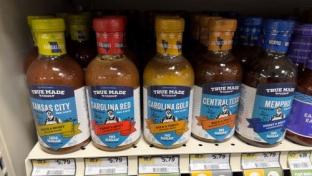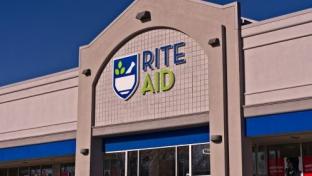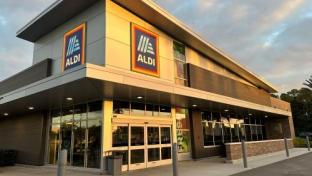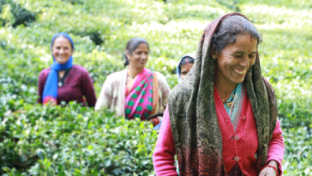EXCLUSIVE: What Grocers Need to Know About Stock-Up Trips
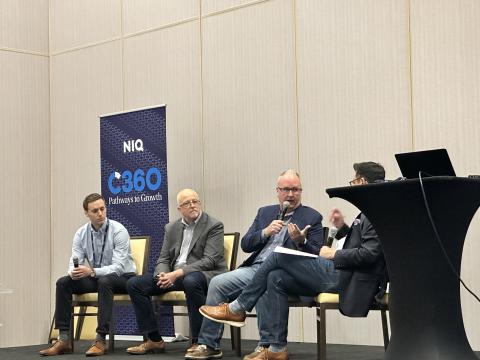
Quick quiz: What percentage of CPG sales are now online?
5%? 8% 16%?
If you guessed 16%, you got the right answer.
The reason for that quick quiz is clear, according to Kenneth Cassar, VP of Omni Solutions Sales at NIQ, who spoke at the company's Consumer 360 conference in Los Angeles last week. Despite the ups and downs of e-commerce sales over the past year, online penetration in grocery continues to increase.
"Shopping trip volume is up 18%," Cassar said. "The consequence of this increase in trip volume is that stock-up trips have seen a shift since peak COVID of about $100 billion in stock-up trips into smaller trips. Small trips, which we define as one to three items, now account for 58% of all CPG shopping trips. And the online channel now accounts for 11% of all stock-up trip volume, which is kind of a surprise at how quickly that has come along."
[Read more: "At a Crossroads: Progressive Grocer's 90th Annual Report"]
NIQ's C360 event attracted more than 600 attendees from across the world and featured Erik Qualman, five-time bestselling author and former sitting professor at Harvard’s & MIT’s edX labs; Ian Somerhalder, Paul Wesley and Vincent Hanna, co-founders of Brother’s Bond Distilling Co.; and David Zucker, chief marketing officer and SVP, e-commerce, Perdue Farms, among others.
Cassar moderated a panel during the conference that featured speakers Greg Davis, VP of category management/shopper insights at Reynolds Consumer Products; Bob Nolan, SVP demand science at Conagra Brands; and Geoff Zahn, associate director of insights and strategy at Post Consumer Brands.
Cassar detailed the three kinds of shopping trips happening now in grocery: stock-ups (more than five items), filling trips (three to five items), and "spearfishing."
"Spearfishing is not a trip segmentation. We probably would have called it a convenience trip 20 years ago, but really it's the wheelhouse of Amazon and other pure-play online retailers," Cassar said. "So trip volume is up significantly and brick-and-mortar stock-up trips are a smaller piece of the pie, online stock-up trips are a larger piece of the pie, and spearfishing is kind of the reality in the grocery space on a lot of categories that retailers may not love, brands may not love, but it is a reality that we sort of have to deal with."
Cassar said the number of food retail banners that consumers are shopping has doubled over the past 10 years.
"So, really significant change in consumer behavior and in fragmentation on the trip end, as well as the kinds of retailers," he commented.
During the peak of the pandemic, stock-up trips accounted for 37% of CPG dollars, Cassar said.
"It was down to 33% in the most recent year and that all shifted to smaller trips, to those spearfishing trips. Essentially a $100 million drop from in-store stock-ups to spearfishing trips," Cassar pointed out.
"Food as part of in-store stock-up trips is actually down 6% since peak COVID, so this is a change that's affecting all categories, even those categories that used to sit very much in those big stock-up orders," he added. "We are actually seeing that the online share of stock-up orders has grown since peak COVID."
So it is still marching along, the growth online. Cassar cited Walmart as an example.
"For Walmart, online stock-up trips account for a much larger percent of the business than brick-and-mortar. So 75% of orders through walmart.com are stock-up dollars compared to 56% when we look at their store visits," Cassar said. "When we look at brick-and-mortar grocery or omnichannel grocery, we see a similar thing. The online trips are more likely to be stock-up trips than in-store trips, and of course there are obvious reasons that this would happen: minimum order sizes, deliveries, and also I do believe that the online merchandising environment is going to be a better environment for suggestions of complementary products. I think we do a pretty good job of it right now but we're going to do a much, much better job as we all learn how to do this."
Nolan of Conagra explained how the company is helping retailers fight back against the degradation of stock-up trips.
"The stock-up trip is important to us because we're the largest frozen foods company, so pretty important to our business," Nolan said. "We think the trips are going to vary across our portfolio. We've got snacks categories which are very different. A lot of spearfishing and things like that I see around that. But we do want to make sure we show up properly in each one, so making sure we have the right search terms, making sure we have the right cross-merchandising bundling so we don't get forgotten on some of those trips. That has been our approach."
Davis of Reynolds said that an omni approach is key.
"We know that behavior, especially over the last three years, has changed immensely. And what is clear to me is this need for an omnichannel approach," Davis said. "But you can't throw out your channel strategy approach, because you still have to focus on the channel. For us, our categories are cross-shopped across all these channels and now you have the online piece of it, so you really have to factor all of that in to really understand how that shopper is shopping across all of the brick-and-mortar channels. You need to really understand the data. I think it's really important that we don't lose focus of that."
Zahn of Post Consumer Brands asked Cassar how CPG companies can help retailers improve the omni experience.
"Retailers that have in-store and online offerings have lower scores for their online experiences across the board. So how do we help them make that an improved experience? How do you win that trip and make sure you're giving the consumer the right information?" Zahn asked.
Cassar said the state of online grocery is still fraught with issues not easily resolved.
"The current state of online grocery shopping is fraught with issues. Some retailers don't have an accurate grasp of their inventory. Labor shortages are still here," explained Cassar. "But we see retailers like Walmart investing significantly in micro-fulfillment centers in order to make that more efficient, and so I just encourage everybody to not assume that the current state is ultimately where it's going to want to go. It's going to get better over time and that online percent of stock-up orders at 11% is going to keep on getting bigger."


